« Pagat Cave and Cliff | Main | China Part 2 -- The Great Wall »
August 13, 2006
China Part 1 -- Tiananmen Square, Forbidden City and Summer Palace
Yesterday we began our voyage into mainland China. However, it wasn't until today until we began our exploration in earnest.
The first stop on our itinerary was the infamous Tiananmen Square. This of course was the site of the massive 1989 pro-democracy demonstration, where tanks were seen rolling in against student protestors. It is fitting that because the revolutionary Chinese leader, Chairman Mao Zedong, conceived the idea of the square, was also where one million Chinese paid their final respects to him in 1976.
Tiananmen Square is perhaps the symbolic center of China. This is evidenced by the mausoleum on one side that contains the remains of Chairman Mao. In fact, it has both a wax likeness and his actual body entombed in formaldahyde. As we passed the entrance in the morning, our guide informed us that Chinese people make it a ritual to visit and pay their respects every (or at lease many) mornings. Also, there is a "meridian" that runs directly through the middle of the square.
In addition, there's a large monument in the middle of the square, called the Monument to the People's Heros. This was completed in 1958, it's about 40m high, and bears the inscription "Eternal Glory to the People's Heros."
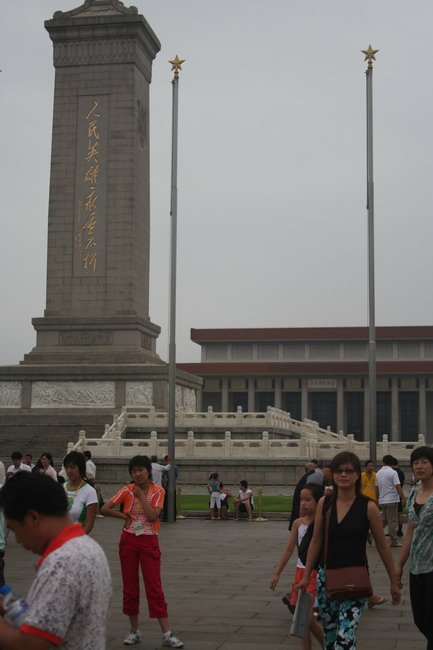
On the other side, there is the Great Hall of the People. Here's an image of it.
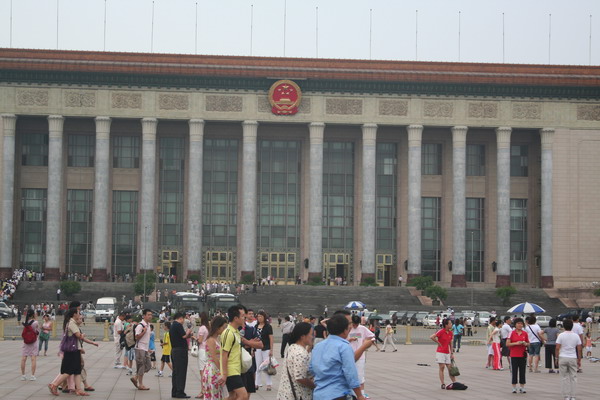
Here is the National Grand Theater, which advertises that the Olympic Games are coming to the capital city. In fact, there are several large clocks in the city that count down how much time is remaining (as of today, it was 725 days...).
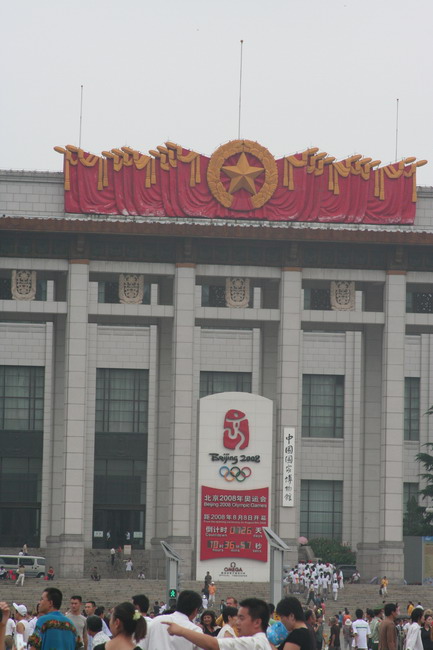
Looking over the throngs of people, you can see the Gate of Heavenly Peace. This was built in the 15th century (and restored in the 17th), and serves as the main gate for the Imperial Wall that encases the Forbidden City within. Also, it was from here that Chairman Mao proclaimed the People's Republic of China on 1 October 1949. You can see his portrait is the main feature of the gate. The inscription on either side reads, "Long Live the People's Republic" on the left and "Long Live the Unity of the People's of the World" on the right. An interesting side note is that the painting was pelted with paint filled eggs during the 1989 demonstration.
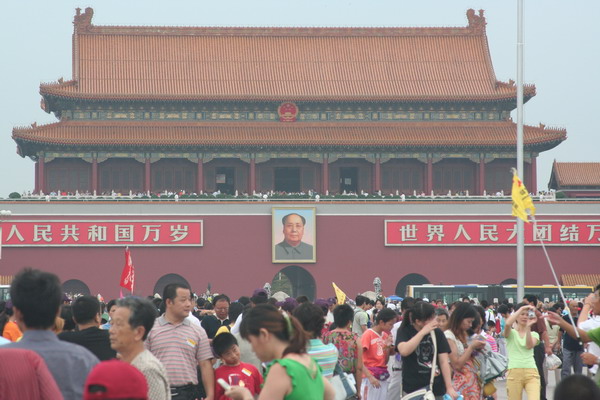
Government service is compulsory in China for 4 years. You can determine what branch these officials are in by the color of their uniform. Green is the military, blue for police, and gray for security.
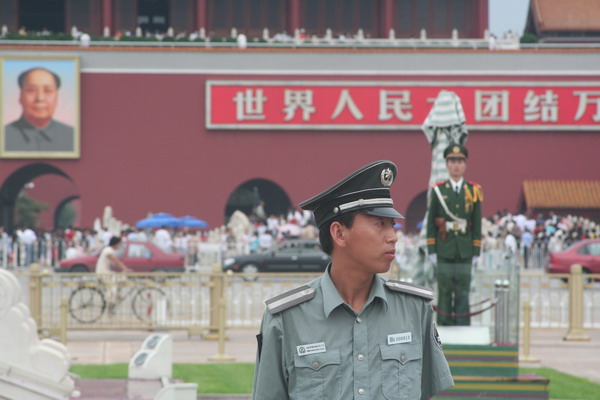
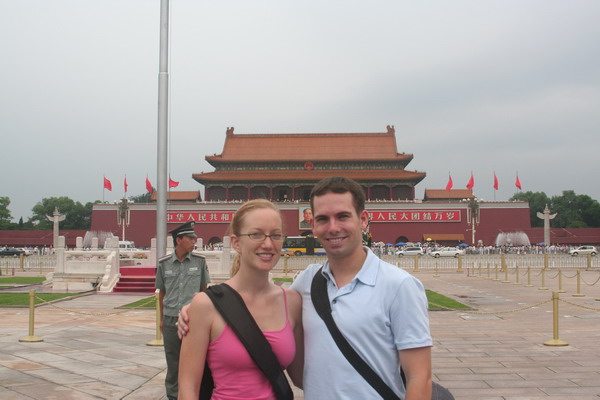
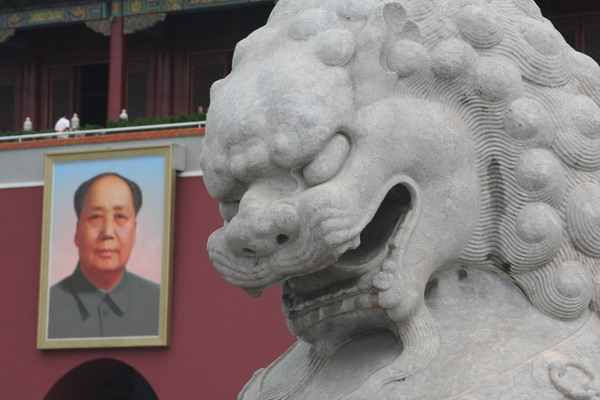
Inside the front gate of the Forbidden City (there are actually nine gates separating the inner city, with the outer). In fact, the number nine has special significance. It is viewed as the perfect number. It's the largest single decimal number, and has spiritual importance.
The Forbidden City is so called because it was off limits to the common people for 500 years. It is the largest cluster of ancient buildings in China. It was home to the Ming and Qing dynasties. Some of the imperial family may have never left the compund. If they did venture out, it was only when absolutely neccessary, and proceeded by a large entourage and accompanied by a loud bell to signify that they were about to depart the inner city. You can see people re-enacting royalty with the yellow robes.
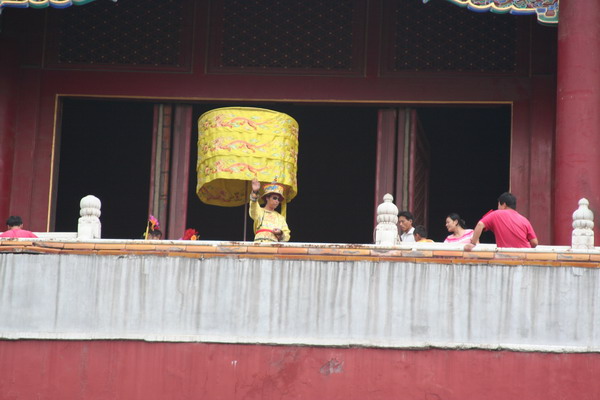
More soldiers...
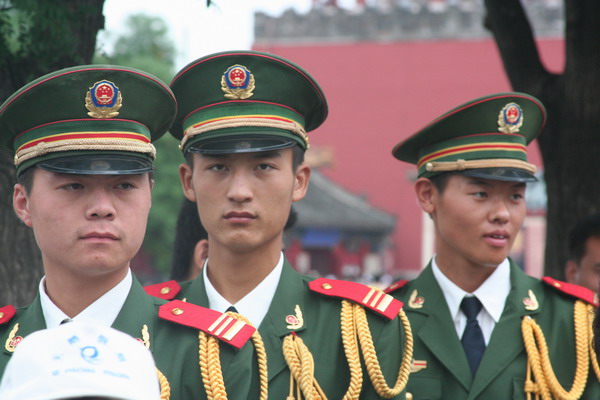
Another gate as we passed further into the Forbidden City. People seemed to have an affinity to touch certain items (like these brass knobs on the gate).
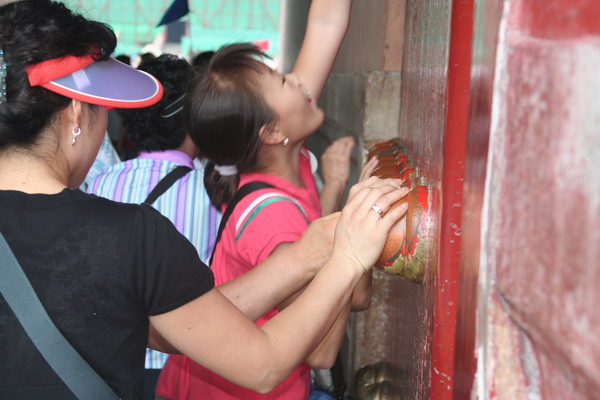
Here you can see the intricate painting on the steeples of the palace.
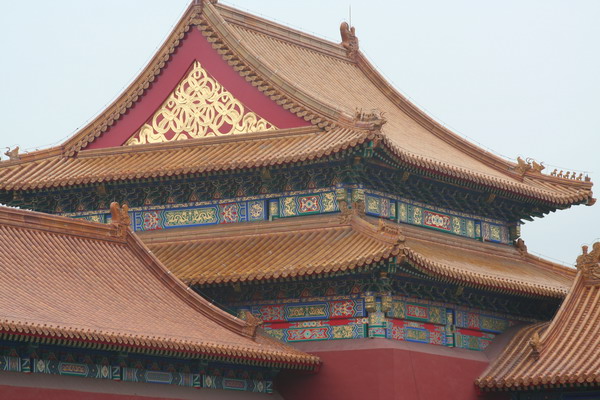

Here is one of the many thrones for the emperor. This one was for last minute preparations before he went out to the outer city.
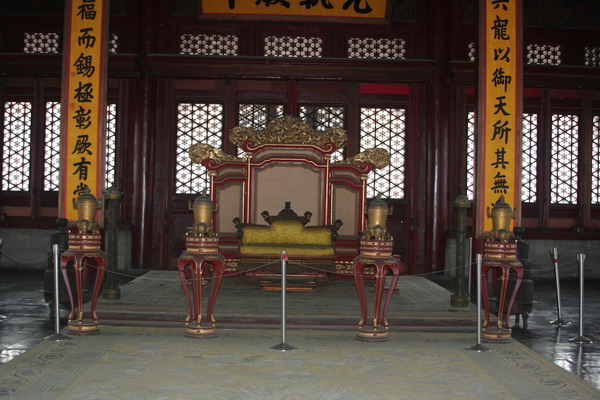
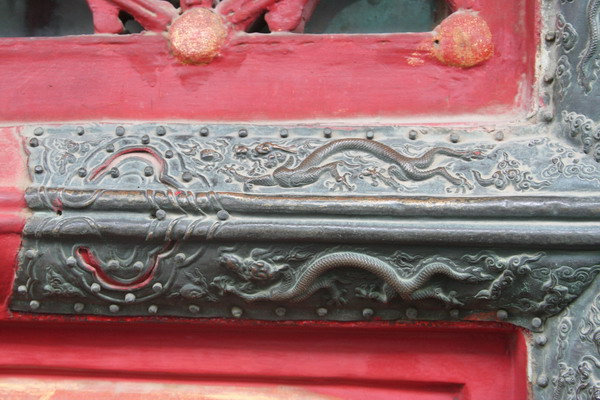
These kids are holding the side of a large container that held water to extinguish any fires that flared up in the city.
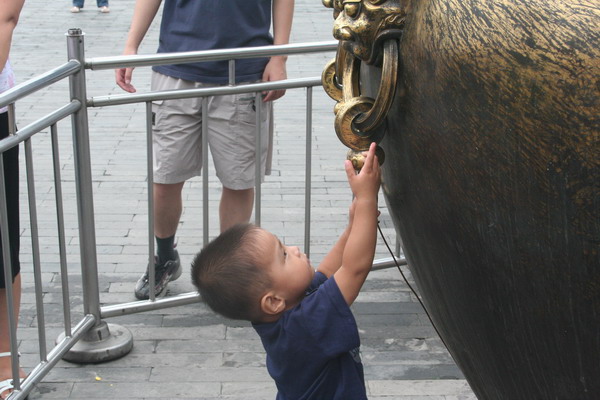
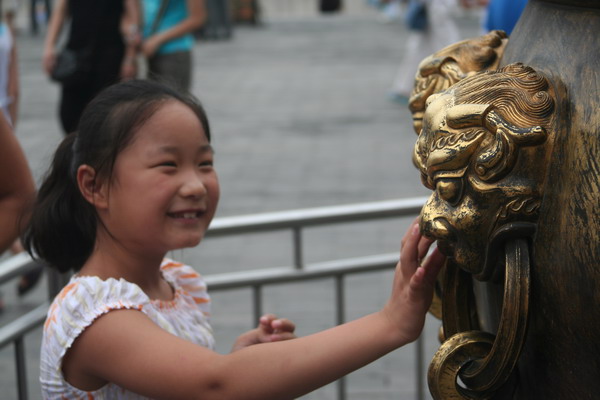
There are many real and symbolic guards to the city...
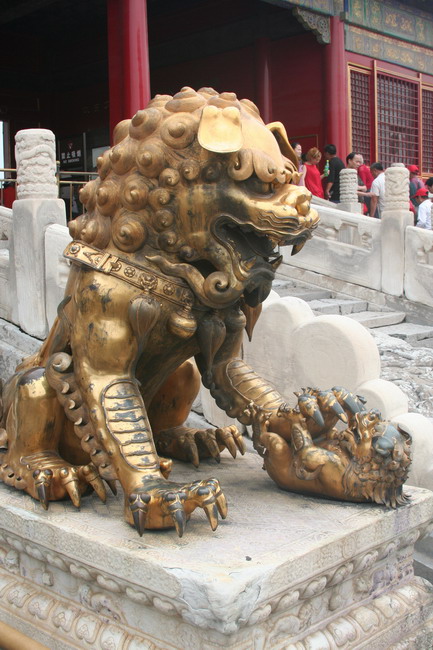
Here is the main throne for the emperor. As you can see it is quite imposing, although rather austere.
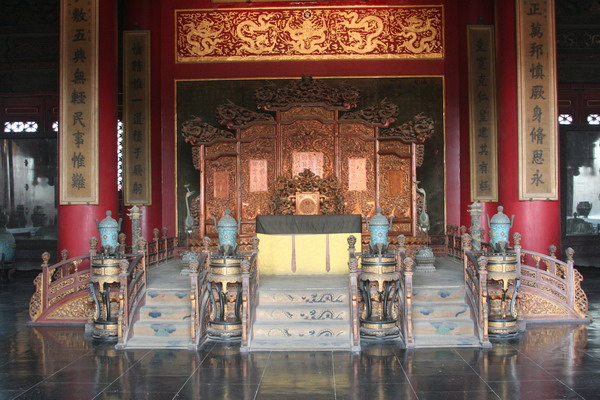
Animals on the roof ... you'll note there are 9 of them...
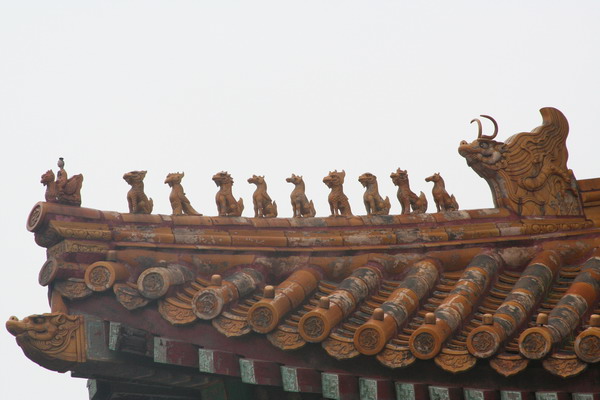
The Love Tree. It begins as 2 individual trees, but grows together as one.
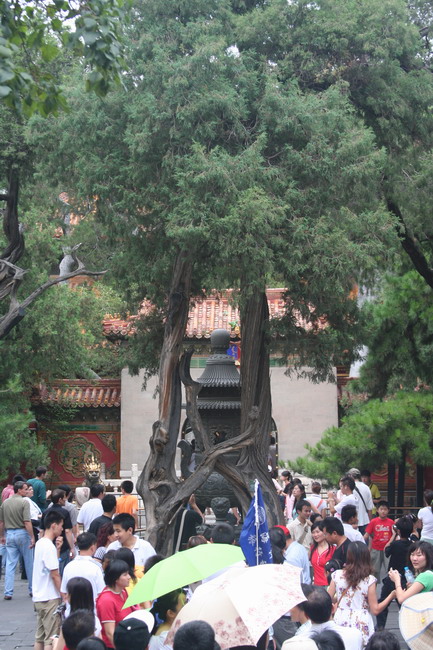
Here is a view of the wall that surrounds the city. Anna liked that the mortar was made with egg whites and rice water.
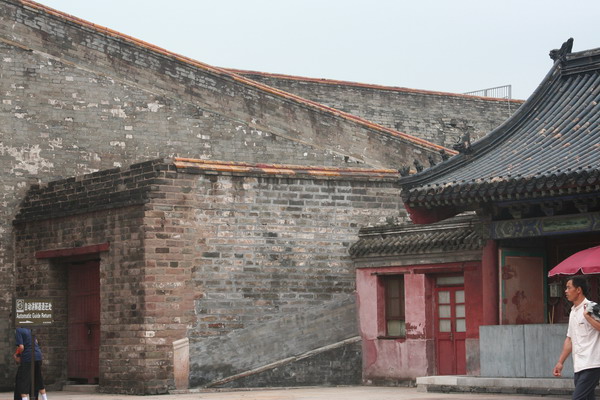
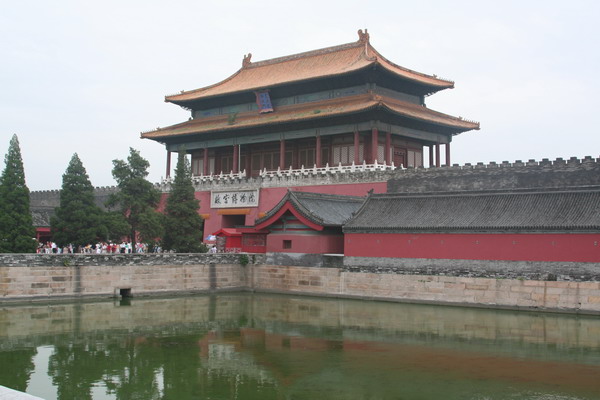
From the Forbidden City, we traveled to the Summer Palace. It was the place where royalty came to escape the furnace like heat of Beijing in the summer.
Here you can see Kunming Lake, which was deepend to about 7 meters and expanded with the help of about 100,000 labourers in the 18th century.
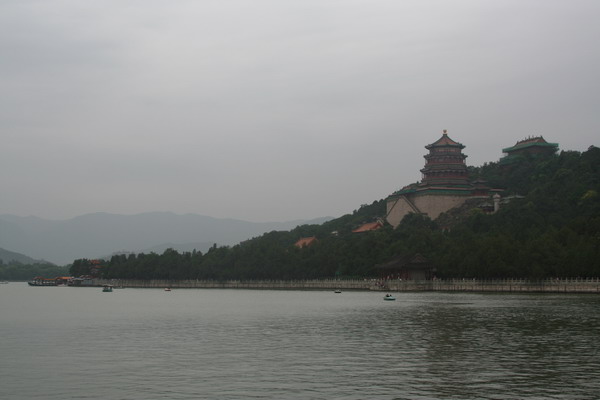
The trees are even labeled according to their age. This one idicates that it's over 300 years old. I suppose that's the benefit of having someone living in the same place for thousands of years, keeping records of everything that happens. :-)
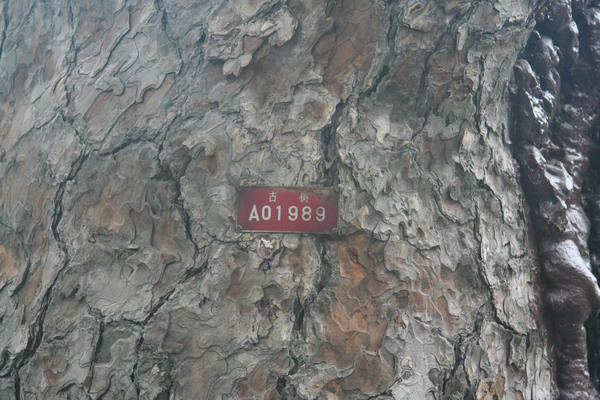
Anna exploring the halls...
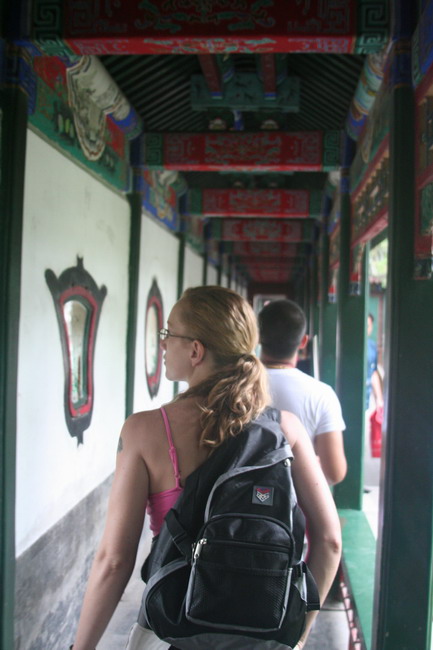
Note how many archways lead to the middle of this bridge.
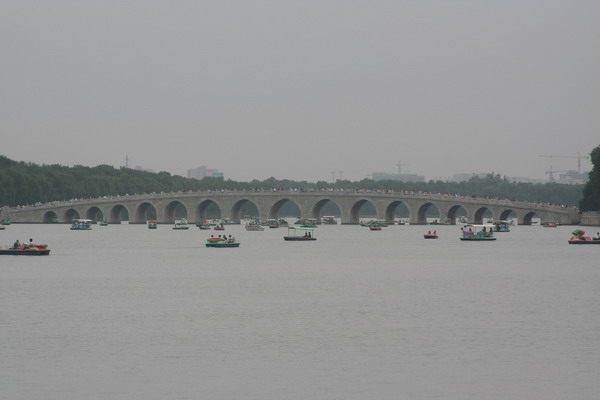
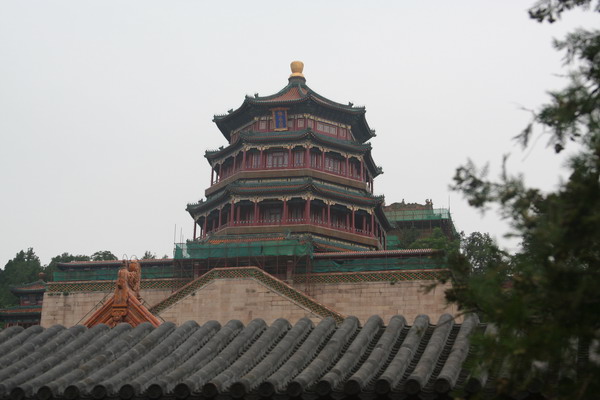
More guards...
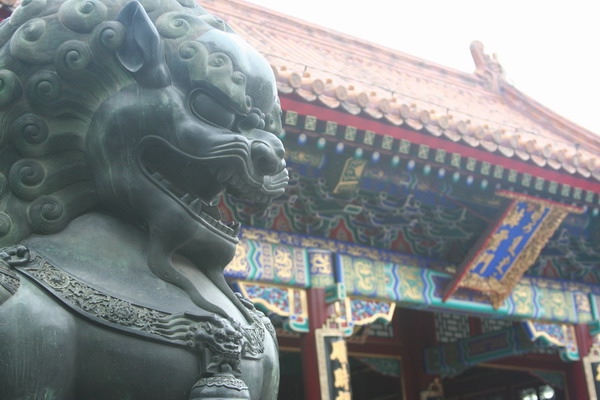
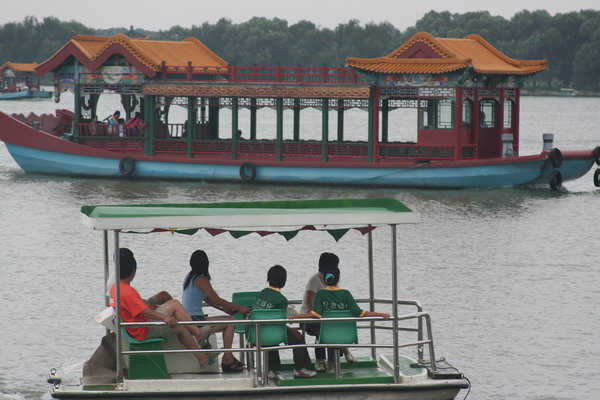
In 1888 the Empress Dowager Cixi used money earmarked for a modern Navy and used it refit buildings damaged in the Second Opium War of 1860. This is the only nautical device she had built. Although quite beautiful, the marble construction doesn't make it the most sea worthy vessel around.
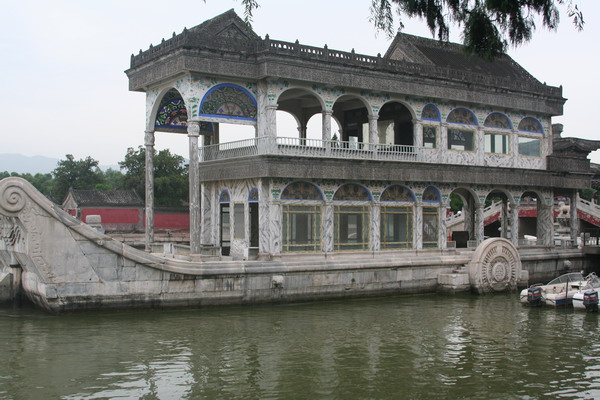
We ended our first day with a Kung Fu show. It was a spectacular display of form, precision, athleticism, and drama (as it was told in the form of a story). The experience was quite enjoyable.
That brought day one to a close. Day 2 holds the Great Wall, the Sacred Road, and the underground palace of Dingling. Dinner tonight will be the signature dish of Beijing, Peking Duck. Yum. I promise, you will hear all about it soon.
Until then...
--Jim
Posted by jim at August 13, 2006 11:35 PM